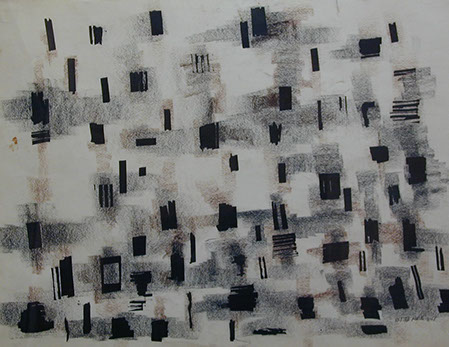Norman Lewis
1909 - 1979
Norman W. Lewis was born in Harlem, New York. His parents had emigrated from Bermuda. Always interested in art, he had amassed a large art history library by the time he was a young man. A lifelong resident of Harlem, he also traveled extensively during the two years that he worked on ocean freighters. An important early influence was the sculptor and teacher Augusta Savage, who provided him with open studio space at her Harlem Art Center. He also participated in WPA art projects, alongside Jackson Pollock, among others.
In 1934, he became a member of the Spiral Group, a group of artists and writers who met regularly that included Charles Alston, Romare Bearden, Ralph Ellison, and Jacob Lawrence.
In the sacred, all-white pantheon of first generation Abstract Expressionists, the name of Norman Lewis (1909-1979) is not enshrined. A black artist who was based in Harlem, he is hard to find in chronicles of the New York School.
He showed his work at important museums and expositions; he got grants from prestigious foundations, he was represented, from 1946 to 1964, by the well-regarded Marian Willard Gallery. But as the luster of Abstract Expressionism dimmed in the 60's, his own reputation faded.
Like his colleagues in the first-generation New York School, Lewis did not approve of art as a forum for political statements. With Abstract Expressionisism, he had turned away from the prevailing Social Realism movement of the 1930's toward more Aesthetic adventures: exploring the potential of color, line, gesture, form. To him, as to the others, the most meaningful ''message'' a work could convey was the glorious act of painting itself.
He was deeply concerned with the battle for black equality. During the civil rights struggles of the 1960's, that concern got into his work. Black-and-white paintings like ''America the Beautiful'' from around 1960, and the 1961 ''Klu Klux'' mock the boobyish activities of Klansmen. But this was really the only time after the early 1940's that polemics -- however mild -- appeared directly in his paintings.
Lewis produced many paintings in which black was the prevailing hue. He used it, as they did, not only as a credo of modernism, but for the richness of shade and tone it offered.

419A Convent Avenue New York, NY 10019
212-368-9635 | Join Us | Hours Tuesday through Saturday, 10am-6pm. Essie Greeen Galleries 2012